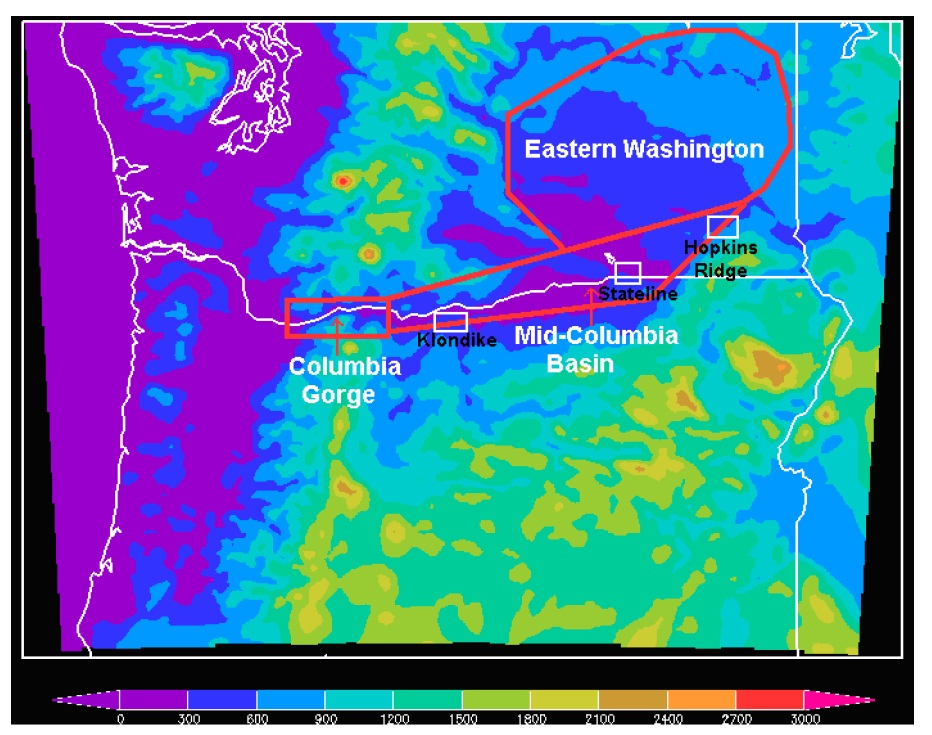Even in the 21st century, wind forecasts of a few hours are difficult. The inscrutable nature of wind forecasting was highlighted in a recent study by AWS Truepower and Lawrence Livermore National Laboratory. Their project, Windsense, was focused on improving wind-power-generation forecasts by developing and applying analystical tools to identify the locations and variables to measure to get the greatest possible improvement in hours-ahead forecasts. The initial results from an application of this approach with the targeted placement of meteporological towers with wind sensors yielded only modest wind forecast improvements for one to two hours ahead. Researchers now think that combining observations at several targeted locations and using one or more sodar (sonar wind sensors) units to sense a larger volume of the atmosphere at each site might improve forecast by a more significant amount and for a few additional hours.

The test area for the forecasting research spans Washington and Oregon state and centers around the Klondike wind farm.
It is critical that wind forecasts are accurate, especially during ramp events, when energy from a regional aggregate of wind farms can change by more than 1,000 MW in an hour. The need for accurate alerts for these type of events is increasing as more wind energy flows onto the power grid. Ultimately, anticipating these types events an hour or two ahead will allow adding larger amunts of wind power to the grid.
Participant AWS Truepower (awstruepower.com) was to identify locations and sensor types required to improve short-term and extreme-event forecasts. The team used an Ensemble Sensitivity Analysis (ESA) technique to identify locations and variables.
ESA, an algorithm refined and applied by AWS Truepower, calculates a forecast’s sensitivity to input data (measurements) at a prior time and other locations. Mathematically, sensitivity is the amount of change in a forecast caused by a change in a measured meteorological variable at a prior time and another location. So ESA is a way to map forecast sensitivity and provide guidance on what and where to measure to most improve a forecast. The study has resulted in improved forecasting tools which alert control-room operators of wind conditions and energy forecasts during ramp events. The experiments in this wind project suggest that during certain weather conditions, mostly unexpected ramp events with precursors often inadequately sensed by existing observing systems, are often anticipated an hour or more in advance with a few specific weather variable measurements from key locations.
“This observation-targeting research conducted as part of Windsense has resulted in the development and testing of algorithms that provide guidance on what weather variables to measure and where to measure them to improve wind forecast performance,” said AWS Truepower Director of Forecasting John Zack.”These new software tools have potential to help forecasters and users make informed decisions that will enable them to maximize their investment in weather sensors.”
“We’re trying to forecast wind energy for any given time,” said project lead Chandrika Kamath at Lawrence Livermore National Laboratories (llnl.gov). ”One goal is to help people in control rooms at the utilities determine when ramp events may occur and how that will affect the power generation from a particular wind farm.” WPE
Filed Under: News




